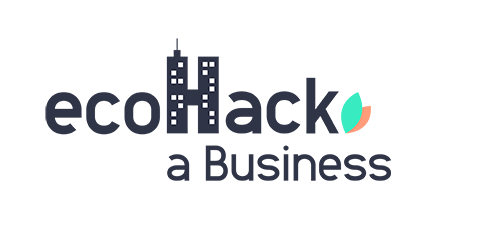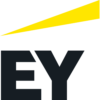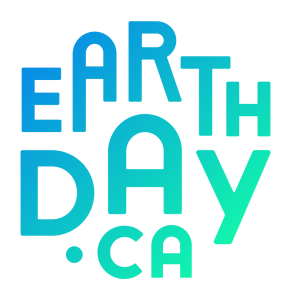EY CANADA, TORONTO – February 8th, 2023
Building sustainable office spaces is a unique environmental challenge businesses face and it is a great area to focus on to make real strides in the ecological transition. It is the challenge EY Canada decided to take on for the EcoHack-a-Business event that started on February 8th, 2023 with a conference that laid the groundwork.
CONFERENCE
Tova Davidson, Executive Director of Sustainable Waterloo Region explained what a culture of sustainability in the office is and how it is more than a series of initiatives. It is an all-encompassing movement. Ghina El Haffar, postdoctoral researcher at McGill University continued by showing the different mechanisms at the heart of behaviour change, which is key to building a culture of sustainability. Finally, Andy Delisi, VP of Sales at Envirotech, discussed the role of space organization and office furniture when looking to make office spaces more sustainable.
The conference recording is available online.
DESIGN THINKING TRANING OUTCOMES (1,125 words)
The conference was followed by Design Thinking training where the participants pondered the question: How might we ensure that new and existing sustainable practices are adopted in the office? Their work provided implementation roadmaps for six projects and EY Canada now has the task to select 1 or 2 projects on which they will focus to ensure successful implementation. The projects foster awareness or taking action for several topics. Learn more about training workshops.
Below is a brief description of each project including obstacles and facilitators that would make implementation easier. The next steps towards implementation are also included and they translate into the formulation of a hypothesis to be validated. The outcome determines whether to continue implementing the project as is or to go back to the drawing board and make some changes before moving forward.
Project #1: Influencing Behaviour Through Positive Reinforcement
This project looks at changing messaging around sustainability initiatives to focus more on positive outcomes and incorporating employee ideas. The objectives are to nudge employee behaviour towards sustainability action and reduce friction between receiving information and implementing sustainable practices. The two main obstacles are the fact that more employees work from home and the fact that a large amount of information is already being received. Despite these obstacles, there are ways to facilitate the implementation of the project by making it accessible in the office through signs, providing incentives to employees who submit ideas and using the Otto by Oxford app that the building management uses to share information about the building.
Next steps: Validate the hypothesis that positive reinforcement of easily accessible sustainability behaviours will result in changes in personal behaviours and ultimately result in sustainable outcomes by putting up one sign in the office (with QR code) and measuring the success of the adoption of a pilot focus area (paper use/battery recycling). If 10% of people coming into the office download the app and survey users are found to have made any positive changes in their daily life, the project can continue as is.
Project #2: Waste Awareness Campaign
Its goal is to create a campaign to raise awareness around current waste practices to increase waste diversion through improving the separation of organics and plastics by employees. The two main obstacles for this project’s implementation will be breaking the habits of employees as well as managing the inconsistent bin positioning. The leadership team and communications team will help with the project set up and role models and champions will enhance the work of these two teams.
Next steps: The hypothesis to validate is that through education and asking employees to pause before throwing waste, they can make a mindful/conscious decision when disposing of waste to reduce contamination and improve waste diversion rates. Bins would have consistent positioning in the office with signage/videos/buttons asking employees to STOP before they throw out their waste and a champion would take photos of disposal bins each day. An audit would be done before and after the campaign to see if there is less contamination and validate the hypothesis.
The project is a contest to reduce energy/carbon to fulfill the UN Sustainable Development Goals #13 and #17. Participants would be given information and would complete energy savings measures over several weeks with the incentive of the greatest reducers being able to make a charitable donation to an organization of their choice. Similar to the Waste Awareness campaign, one of the main obstacles will be to fight against habitual/engrained practices. Another one will be to have access to team resources, data, and ongoing work-commitments to project goal. The facilitators in implementing the project would be the stakeholders involved: the social innovation team, building management, the communications team, the charitable team and the UN Association in Canada.
Next steps: The lasting impact in and outside the office of the UN Energy EcoHack is what needs to be validated. Conducting post-event surveys and using data measurements to benchmark savings/behaviour will help measure the impact. If practices developed during the campaign continue within the 50-75% range and if the energy consumption remains flat or comparable, then the campaign will have succeeded.
Project #4: Reusable Kitchenware Program
This program is thought of as an improvement and expansion of the existing reusable dishware program and can be extended to the rest of the offices. Its goal is to eliminate single-use items from kitchen spaces and promote the use of reusable products more generally. The main obstacles are of a different nature for this project, revolving around cost (paying someone to clean reusables), compliance (people returning used items to the appropriate spot/avoiding hoarding) and accountability (ensuring the items remain in the office). The success of the program relies on improving signage, the ease of use of products and the provision of updates via office-wide communications.
Next steps: The hypothesis to test is “If we remove the option for using disposable dishware, people will be required to make effective use of the reusable items in the kitchens”. Removing disposables and assessing people’s attitudes and adoption will help validate the hypothesis before expanding the reusable dishware options.
The purpose of this project is to raise awareness on the environmental impact of merchandise and change the mindset towards it in the office space. The main obstacle is the corporate culture which relies on merchandise to promote brands and which in turn creates the expectation in employees that they will receive merchandise. Raising awareness on the impact of unused merchandise will be a powerful tool to ensure the implementation of the project as well as strategic purchase planning, team leaders to palliate the resistance to behaviour change and cost/benefit analyses.
Next steps: The belief for this project is that reducing merch during events will not harm but benefit the brand. To test this hypothesis, data will be gathered to understand people’s habits towards merch to add an opt-in/opt-out option to receive merch on the registration pages of events. The test will be considered a success if there is around 30% reduction of people wanting to have merch.
Project #6: Circular Office Program
The purpose of this program is to promote the reuse of furniture and materials to manufacture office furniture and equipment. The main obstacles to the implementation of the project are the active resistance to using second-hand products and the status quo in procurement processes and procedures. Partnering with organizations and working with suppliers and companies that have similar programs will be key steps to enable the implementation of the program.
Next steps: The hypothesis to test for this project is that the company WANTS to participate in a circular office plan. A survey and a pilot will be done, and the project could be implemented as is if the results from the survey are positive and if the pilot project is a success.
Contact us
Earth Day Canada
5818, boulevard Saint-Laurent
Montréal (Québec) H2T 1T3 Canada
Phone : (514) 728-0116
Toll free : 1 800 424-8758
Fax : (514) 303-0248
Email: hello@earthday.ca
2025 © Earth Day Canada. All rights reserved.
Privacy policy · Terms of use · Trademark





